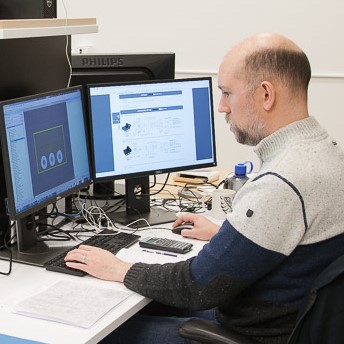
Why it pays to dig deeper – IEC 60601
One of the key values at StarFish is that we “look deeper and solve the right problems.” This blog is about a situation where dig deeper – IEC 60601 saved me from potential problems later down the road.
Rather than rolling our own power supply for a device, we’ll often use an off-the-shelf power supply that’s already been certified to 60601. On one particular project we were using a modular power supply that supports a number of different modules with different voltage and current ranges. These modules have floating outputs so, in theory, they should be completely isolated from any other module’s outputs.
This was exactly what we needed for a device that had a BF applied part (Type BF Applied Parts are those parts not suitable for direct cardiac application) – which must maintain safe limits to patient currents even in the presence of external voltage sources. Note that one of the supplies was, from a 60601 point of view, directly connected to the patient. This meant we needed an isolation barrier that could withstand a hi-pot test of 1.5kVRMS. As it turns out, the modules were separated from each other… except for the 500VDC rated EMI (electromagnetic interference) suppression capacitor on each module that’s connected to the common chassis.
While we were mulling over our options to fix this issue, the manufacturer introduced a new model that was also 60601-1 rated, and unlike the previous supply, was specifically billed as being suitable for Type BF applications. “Perfect”, you might think, but that’s not quite the case and here’s where we get to the benefit of dig deeper – IEC 60601.
Obviously we didn’t want to end up in the same situation again, so I started digging into the technical documents that the manufacturer provided me, including portions of their isolation diagrams and test results from the 60601 testing. As it turns out, we didn’t have to worry about the EMI capacitor any more, but now there was a new problem.
Instead of having separate digital control inputs directly on the modules like the old supply, the new system used a bus configuration where the modules all plugged into a common control board. Most, but unfortunately not all, of these digital lines did have sufficient isolation. This meant that the new system wasn’t actually suitable for BF applications as claimed.
So that you can learn from my experiences, here are my three dig deeper – IEC 60601 take-aways:
- Make sure you are familiar with 60601 requirements. Isolation diagrams and test reports can be complicated documents. If you’re not familiar with the safety requirements you need to meet, it’s easy to overlook something.
- Trust, but verify. For something as serious as patient safety, and because I had been burned before, it was my responsibility as the engineer to make sure that our device couldn’t cause harm.
- Don’t be afraid to talk to the manufacturer. The information I needed was not the sort of info that would typically be available in the datasheet on a website. A reputable manufacturer should be willing to work with you to ensure that their product is what it claims.
As for our power supply issues, well, it’s back to the drawing board again.
Adam MacNeil wrote this blog while working at StarFish Medical as an Electrical Engineer. Adam completed three co-op terms with StarFish– one in Manufacturing and two in Product Development. He now enjoys rock climbing, motorcycling and geocaching in beautiful Nanaimo BC.
Images: StarFish Medical
Another key requirement for ISO 60601-1 is the protection against ingress. Read more here.
